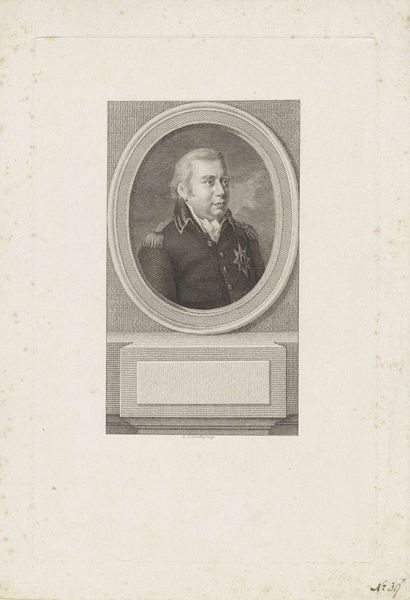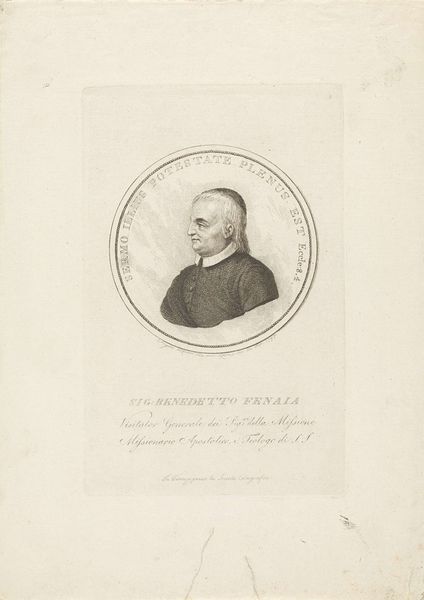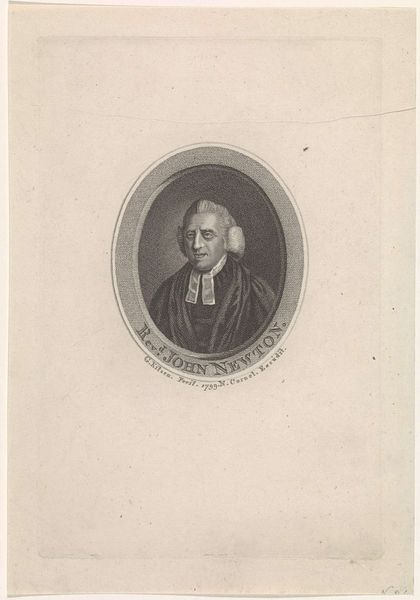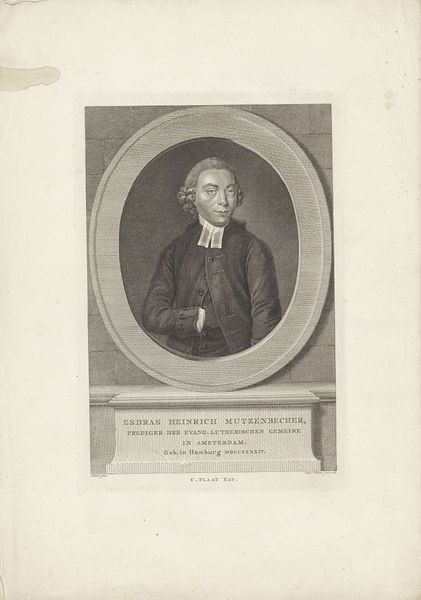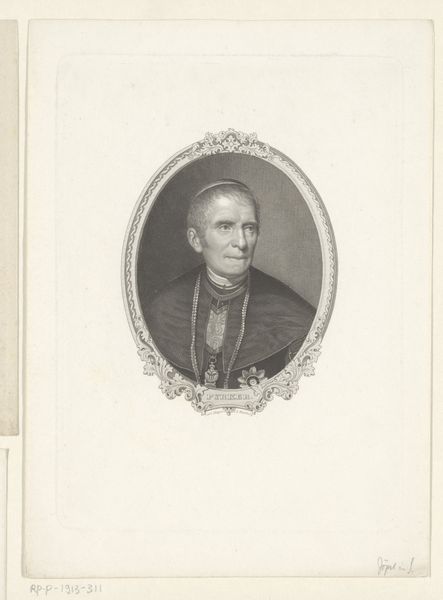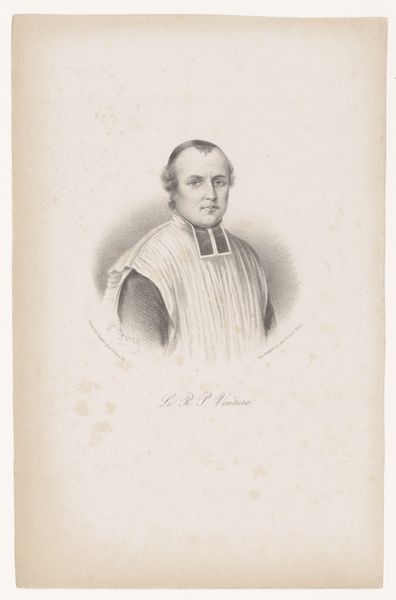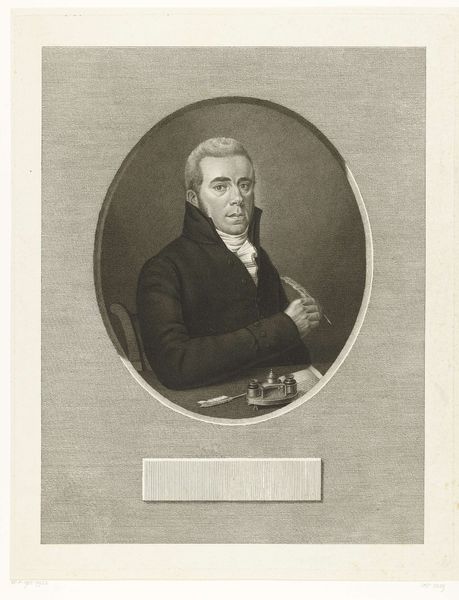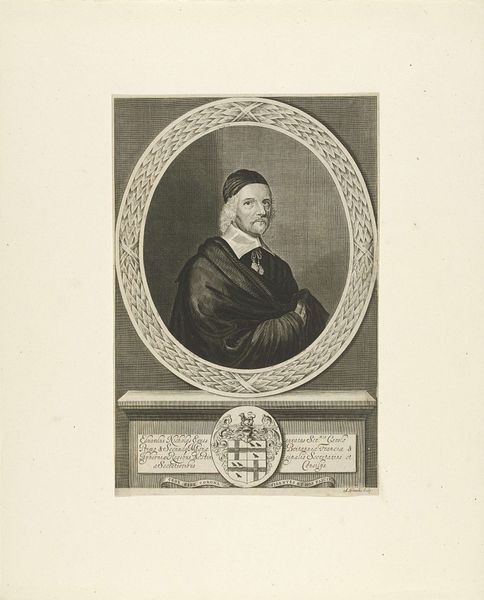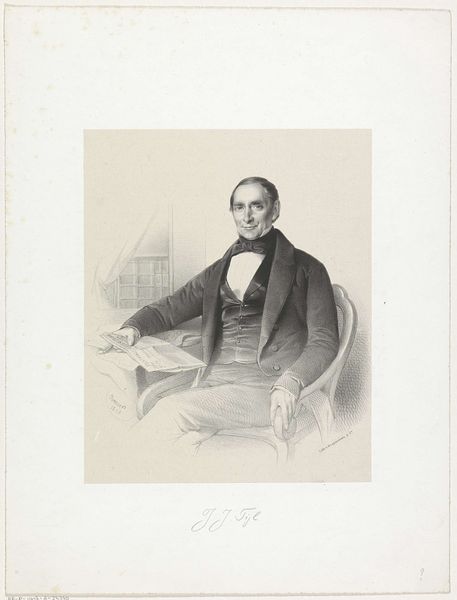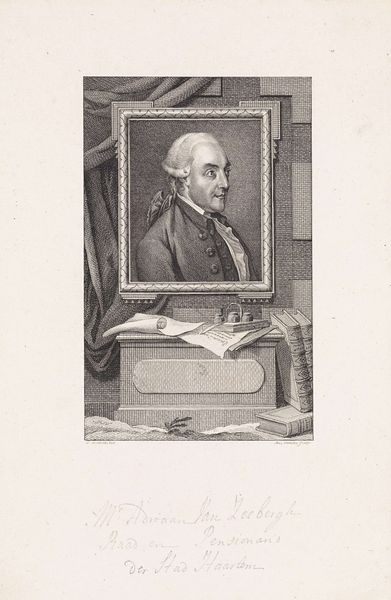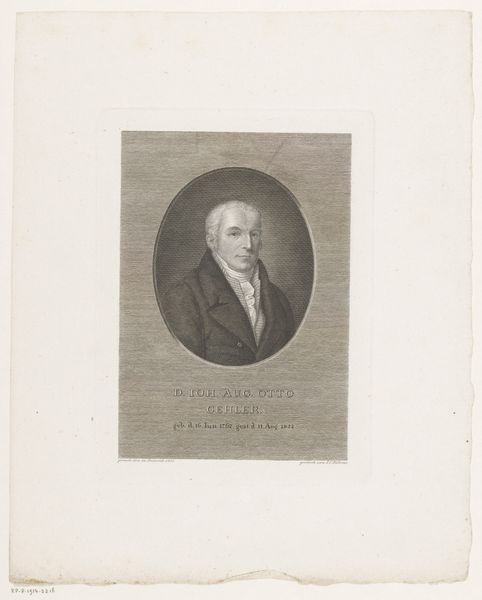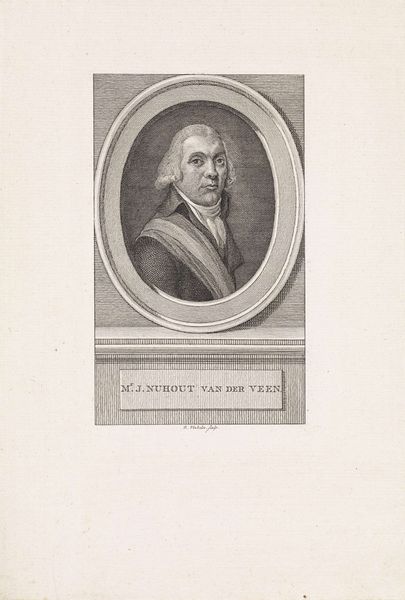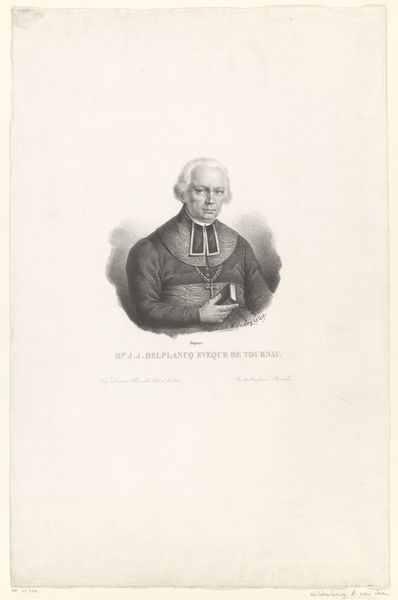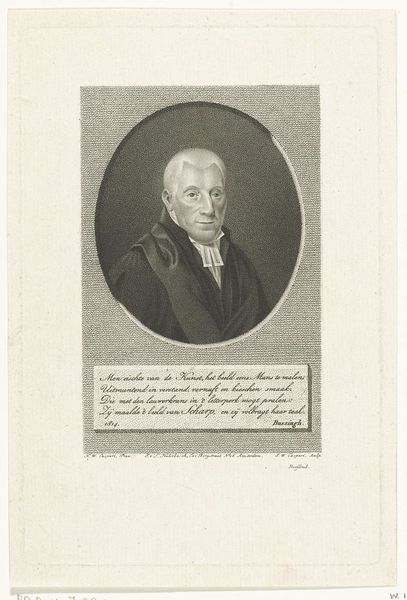
print, metal, engraving
#
portrait
#
baroque
# print
#
metal
#
old engraving style
#
old-timey
#
engraving
Dimensions: height 260 mm, width 160 mm
Copyright: Rijks Museum: Open Domain
Editor: So, this is a portrait of Michael Ophovius, an engraving on metal, dating sometime between 1615 and 1690. It's got this very formal, almost severe quality to it. How do you read this image, what does it bring to mind for you? Curator: Beyond the formality, I see a fascinating representation of power and identity construction during a period of intense religious and political upheaval. Ophovius was Bishop of 's-Hertogenbosch during the Dutch Revolt. Considering that context, how do you think this portrait functioned? Was it merely a likeness? Editor: Well, the elaborate frame and the inscription suggest it's more than just a simple portrait. It feels like it’s making a statement, or solidifying his position, perhaps? Curator: Precisely! Think about the visual language: the use of Baroque style, with its emphasis on grandeur, suggests a deliberate effort to project authority. The fact that it’s a print means it was designed for dissemination, implying a broader intended audience. Given that this portrait was created during a period of religious conflict, could this image be a form of propaganda or reinforcement of existing hierarchies? Editor: That’s interesting. It shifts my perspective, viewing it as less about the individual and more about the power structures at play, especially considering the religious tensions of the time. The symbolism of the coat-of-arms becomes more potent. Curator: Exactly. Ask yourself, what other symbols and visual cues are working to solidify this message? Who was the intended audience, and what message were they supposed to receive? Considering these kinds of questions helps us uncover the nuanced meanings embedded within even seemingly straightforward portraits like this one. Editor: I see what you mean! It encourages one to dig into the social context that informs the art. I will not see another portrait without pondering those elements again! Thank you. Curator: Indeed, it moves our experience from aesthetic appreciation to one of critical historical engagement.
Comments
No comments
Be the first to comment and join the conversation on the ultimate creative platform.
